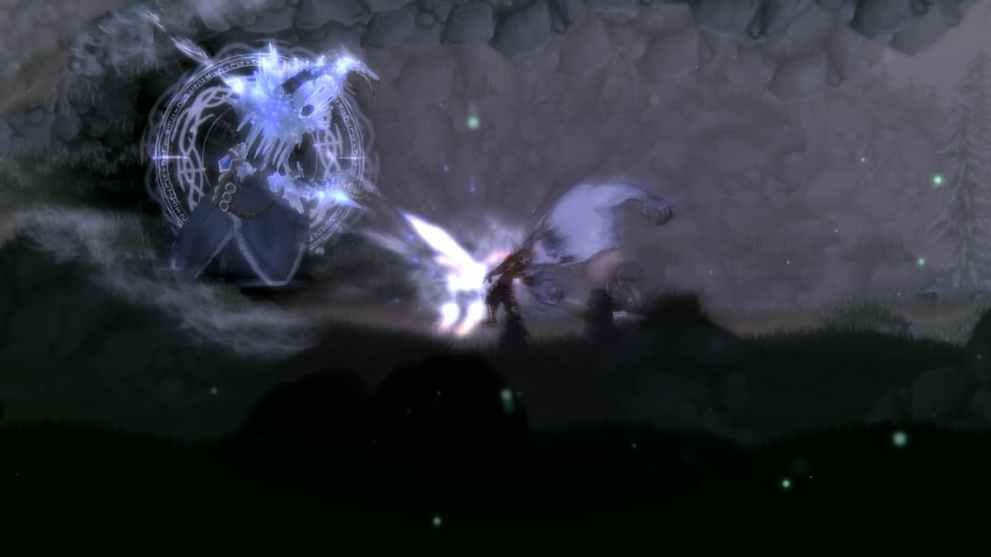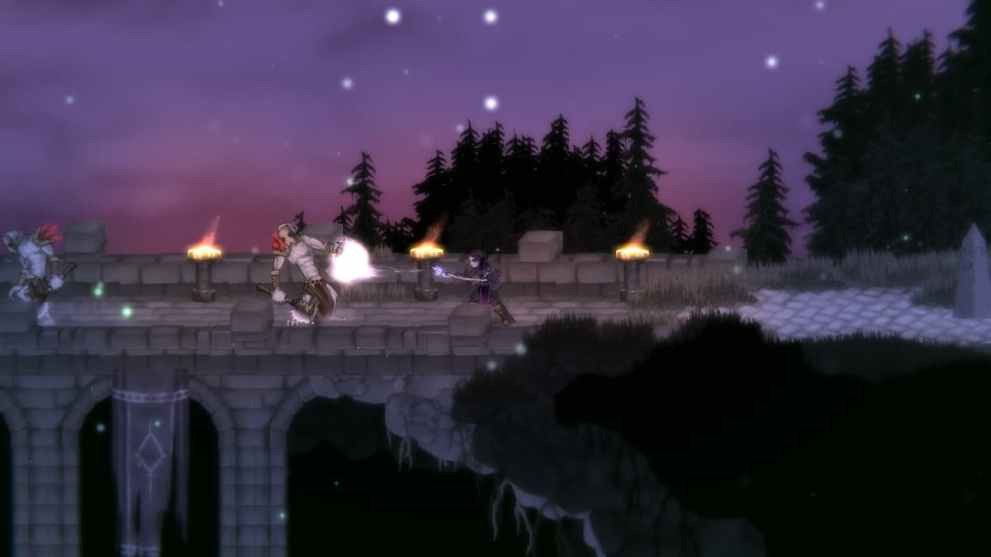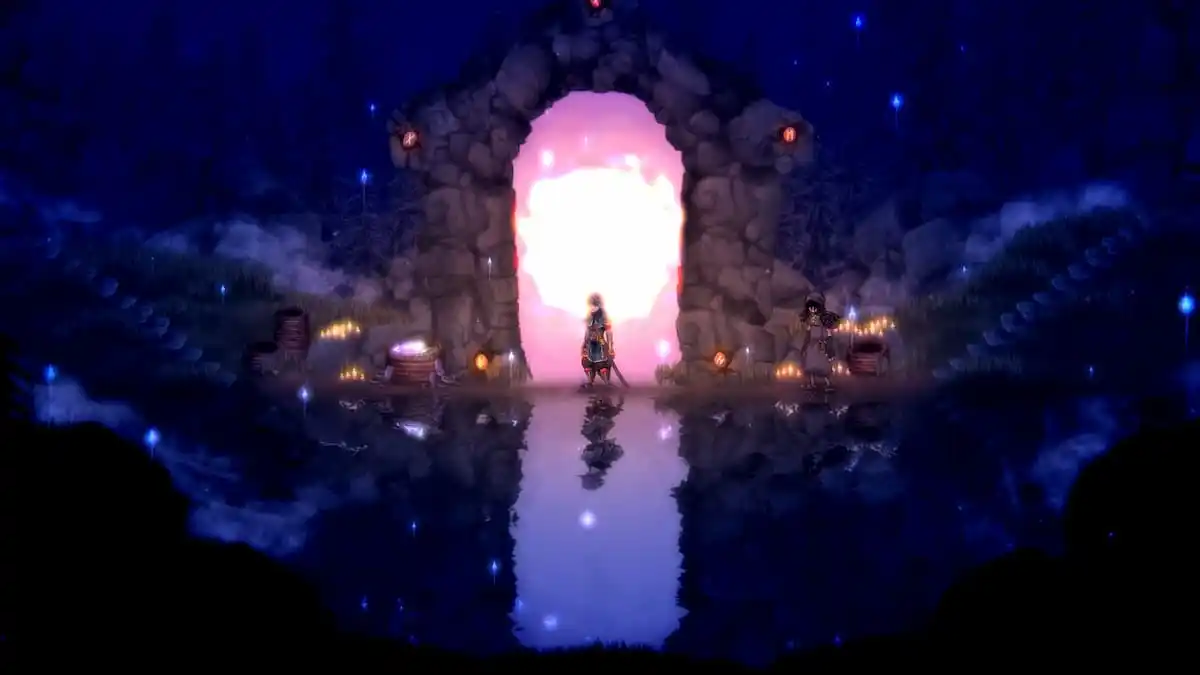Salt and Sacrifice on PC
Thinking back on it now, a large part of why I enjoyed Ska Studios’ Salt and Sanctuary so much was likely because my Soulsborne craze was at an all-time high. I’d just gotten 100% completion in Bloodborne, I beat Dark Souls III and 100%-ed that as well, and in came Salt and Sanctuary –the perfect game to continue feeding my Soulsborne addiction. It totally ruled, even if it wasn’t without its issues.
Fast forward six years later, and Ska Studios has released a follow-up titled Salt and Sacrifice. At this point, I’ve mellowed out a bit. I’ve played dozens of Souls-like games in the past six years and smashed my way through Elden Ring, though I didn’t quite have it in me to try to 100% that massive game. While Salt and Sacrifice does bring a few new things to the table, for better or for worse, it’s still largely the same 2D side-scrolling RPG experience that we’ve played all those years ago.
The moment you boot up the game, it should feel instantly familiar to anyone who’s played a Souls game in the past decade. You customize your character, choose your class and a starting gift, and off you go. Even the opening act follows the Souls formula down to a T: get acquainted with the controls, kill a few enemies, then proceed to get your ass handed to you by a tutorial boss that’s way too difficult at your current level.
Because your character is Spellmarked (read: Undead, Bearer of the Curse, Ashen One, Hunter, Tarnished), you can’t actually die. After committing a heinous crime (you get to pick this at the start of the game), you’re basically doomed to become a Marked Inquisitor, tasked with hunting Mages all over the land. And then the game sends you on your way, and that’s where the fun starts.
Salt and Sacrifice features a hub world where you can interact with various NPCs, forge equipment, and level up. Once you’re all set, you can head into various locations via a portal as you unlock them, and start hunting those pesky Mages.

Just like its predecessor, Salt and Sacrifice surprised me with just how huge its world is. Out of all the Souls-like games we’ve seen from various developers over the years, Ska Studios still comes the closest to capturing the essence of FromSoft’s series by introducing interconnected world design, and winding paths that smartly lead back to shortcuts or familiar areas you’ve visited before. Even as someone who’s admittedly grown rather tired of the Soulsborne formula, I still found it immensely satisfying whenever I discovered a clever shortcut, or when I finally explored an area thoroughly enough to be able to map it out mentally and instantly know where I needed to go next.
If there’s a complaint to be levied against Salt and Sacrifice’s world design, it would be that the levels all look rather samey. They’re all themed differently, of course, and you’ll find yourself feeling intimidated the first time you step out of Ashbourne Village and into Greymoss Mire. The problem is that Salt and Sacrifice tends to stick within its dull, grey colored palette, and its divisive art style doesn’t help things either.
Personally, I’ve never been a fan of the series’ big-headed, wide-eyed chibi character models and its gothic, cartoony fonts and environments. It’s a personal preference for sure, but if you happen to fall on the side of not liking the art style as well, it’s hard to imagine that you’ll find this game particularly visually striking or stunning.
Thankfully, if you’re not too fussed about the way the game looks, Salt and Sacrifice makes up for that by delivering on the combat side of things. The game features a crap ton of weapons, ranging from your regular greatswords and straight swords to bows, katanas, and staffs. These are all fairly typical weapon types, but the sheer number of unique weapons you can find within those types can be staggering.
The game also makes use of a stamina system, meaning that you have to be careful about spamming attacks and panic rolling, especially during boss battles. Bosses, or Mages as they’re referred to, continue to be the highlight of Salt and Sacrifice, and Ska Studios elevates them to a whole other level by introducing Mage Hunts, which are easily the game’s most unique quality.

Eventually, you’ll reach a point in the game where you can start encountering bosses in the open-world, and you’ll be tasked with chasing them through various zones before you finally get to fight them properly and devour their heart. At first, the Mage Hunts can feel really frustrating, as they usually involve the bosses flinging ranged attacks and spells at you before disappearing once you hit them.
However, chasing them down efficiently requires you to at least have a decent grasp of how the area is laid out, and being able to track down a Mage while avoiding regular enemies on the way feels very rewarding for players who have taken the time to explore their surroundings. Taking their hearts then allows you to forge even more powerful equipment, so they’re definitely worth tackling.
If you enjoy the Mage Hunts, each region in Salt and Sacrifice also contains a Fated Tome, which can then be brought back to an NPC in the hub to unlock Fated Hunts. These are procedurally generated Hunts that you can attempt daily, and it’s a great way to test your knowledge of the bosses themselves and the map.
Tying all of these elements together are the combat and leveling systems, which still feel like a lot, especially at the start. You’ll gather Salt and present them at the altar back in the hub to level up, and you can then spend skill points to unlock other perks and stat boosts in a gigantic skill tree that goes on for days. Seriously. Remember the Path of Exile-like skill tree we got in Salt and Sanctuary? It somehow looks even bigger in this game, and it’s basically a min-maxer’s dream.
Even as a min-maxing enthusiast, I found myself quickly getting overwhelmed with just how many paths and options there were. Leveling up your character is straightforward and doesn’t require you to pick any stats to put points into, but it’s in the skill tree where your choices can really impact the way you play this game. Combine that with the combo-style action of the game, and it becomes really easy to create a build that feels truly unique to the player.
At the end of the day, though, I couldn’t bring myself to keep playing once the credits had rolled. There were still secret areas to explore and Fated Hunts to clear, and so many damn weapons to try out. I simply unplugged my gamepad, turned off the PC, and turned my attention to a different genre of game entirely.
Perhaps it’s because I’m still decompressing from my two month-long Elden Ring binge, or maybe the reason is as simple as me not clicking with the game’s art direction. I think it’s more likely that I might be all Souls-ed out at this point; we’ve seen this same formula over and over again, and as we get further into this era of Souls-like games popping up at every corner, that formula needs to be iterated and improved upon.
Elden Ring pushed it forward by plopping players into a massive open-world, and Salt and Sacrifice attempts to keep things fresh as well by introducing distinct elements like the Mage Hunts and a never-ending skill tree, but on a personal level, that’s just not enough to keep me engaged and invested. Far be it from me to dissuade anyone who’s looking for a new Souls-like game to sink into; Salt and Sacrifice is a worthy title in this blossoming genre, and it serves as a great follow-up to its predecessor.
It’s funny to imagine that if this same game had released six years ago, I would’ve been chomping at the bit to get through it and see every bit of content it had to offer because it’s just such a solid RPG. As it stands, Salt and Sacrifice continues to nail down all of the moving parts and elements that go into creating an impressive Souls-like game. For most players –especially those just discovering the genre for the first time– this is an easy recommendation. But for the rest of us, it’s not quite enough anymore.
- Mage Hunts are a fun, innovative element that shake up the formula.
- The regions are well-designed and enjoyable to explore.
- Plenty of weapons and builds to experiment with.
- The Path of Exile-esque skill tree can be very overwhelming.
- The art direction is an acquired taste and won't necessarily appeal to everyone.
- The regions can look a bit samey because of the dark color palette.





Published: May 9, 2022 10:00 am